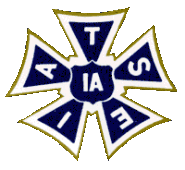

The I.A.T.S.E. Union began in 1893 when show business meant the stage. During the next twenty years the stage carpenters, propertymen, and electricians pioneered a drive for union recognition in the theater. Through their efforts, their craft was established as one of the highest paid and most respected in America. In 1908, soon after the birth of the film industry, projectionists from all over America were brought into the I.A. fold. Again a battle for recognition and top wages was fought and won. In the 1920's union benefits were extended to the Hollywood studios and the vast network of film exchanges throughout the United States and Canada. As soon as commercial television became established, the I.A. took its place within this newest field of visual entertainment.
In television, films, theaters, concert halls, art and cultural centers, auditoriums, arenas and other similar facilities, as well as traveling road shows, I.A. members serve as stagehands, ticket sellers, ticket-takers, make-up artists and hairstylists, costumers, ushers, doormen, maintenance employees, carpenters, electricians, property people, art directors, story analysts, cartoonists, set designers and decorators, scenic artists, art craft-persons, graphic artists, set painters, grips, teachers, video engineers, motion picture and still camera persons, sound technicians, editors, script supervisors, laboratory technicians, projectionists, utility workers, first aid employees, inspection, shipping, booking and other distribution and sales employees all working together to help create projects.
Members of the I.A. have long been proud of their complete coverage of the crafts of stage, screen and television. From the moment a theatrical picture is first conceived to its last day at a second run movie house, I.A. technicians are on the job. That principle of complete coverage have been applied by the I.A. with ever-increasing success to each new form of the visual entertainment industry. It is the key-note of the union's effectiveness in building the highest wages and best working conditions to be found among skilled craft-persons anywhere. In union there is strength, and when every branch of an industry is united, that strength becomes invincible.
Today there are over 600 local unions of the I.A. throughout the United States and Canada. Most contracts are negotiated locally or by region, but some of the traveling shows are covered by nation-wide agreements signed by the International Office. The I.A.T.S.E. has come a long way toward accomplishing the purposes set down in its International Constitution. These are; to improve the social and economical conditions of our members; to make sure that the wages remain fair for jobs well-done; to ensure that our members are working within the industry. We assure these things by working together as a Union and by pledging to listen to conservative mediation when we find ourselves facing difficulties. For many workers in this industry, I.A. membership is one of the most valuable possessions of their lifetime and they are convinced that this value and source of pride will continue to grow in the years ahead.
For more information please contact:
I.A.T.S.E. International Office: 1515 Broadway, Suite 601, New York, NY 10036-5741; (212) 730-1770, fax (212) 921-7699
I.A.T.S.E. Local #127: 2710 Live Oak Street Dallas, Texas 75204; (214)742-4741 Office phone.